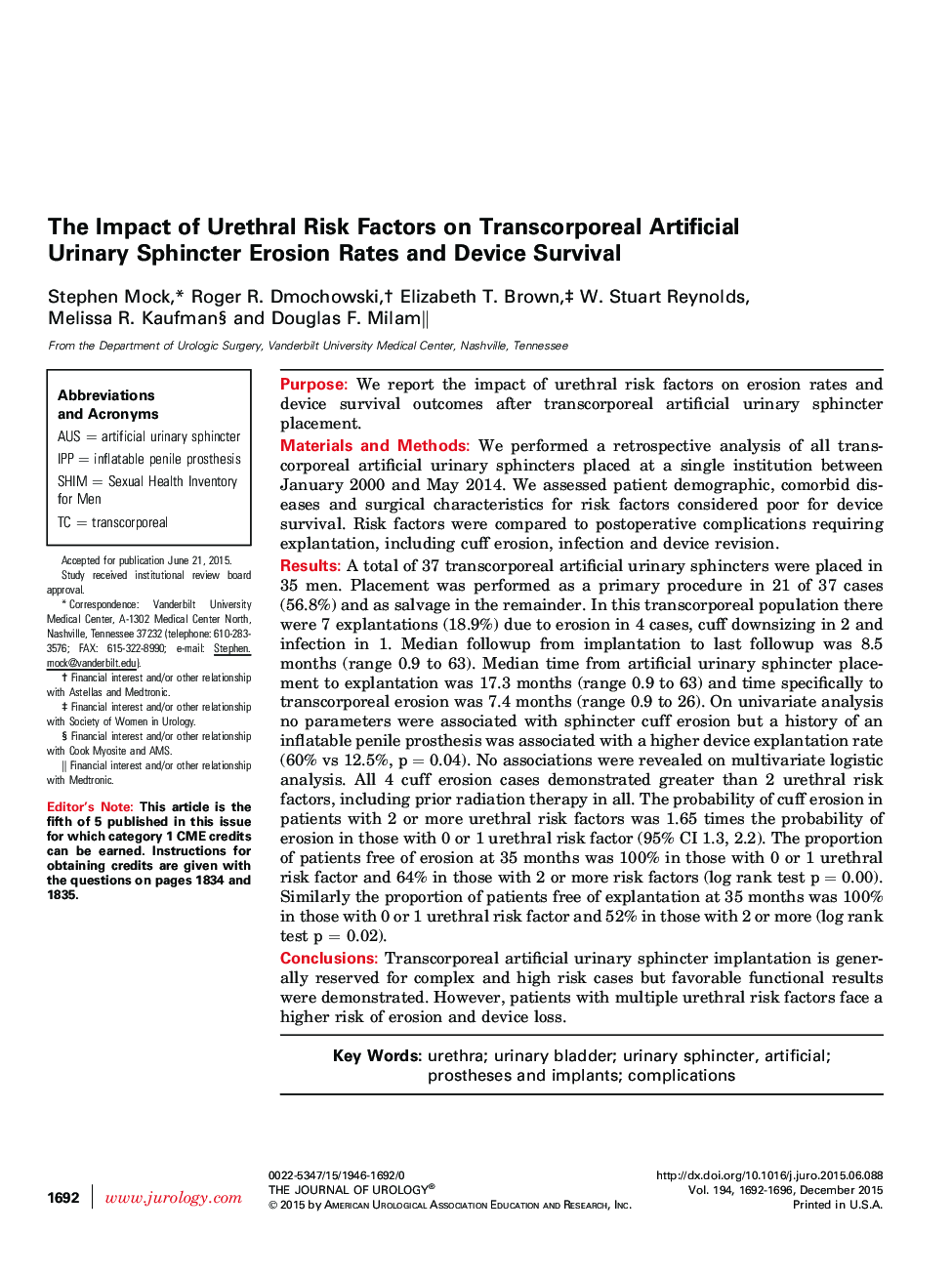| Article ID | Journal | Published Year | Pages | File Type |
|---|---|---|---|---|
| 3860355 | The Journal of Urology | 2015 | 5 Pages |
PurposeWe report the impact of urethral risk factors on erosion rates and device survival outcomes after transcorporeal artificial urinary sphincter placement.Materials and MethodsWe performed a retrospective analysis of all transcorporeal artificial urinary sphincters placed at a single institution between January 2000 and May 2014. We assessed patient demographic, comorbid diseases and surgical characteristics for risk factors considered poor for device survival. Risk factors were compared to postoperative complications requiring explantation, including cuff erosion, infection and device revision.ResultsA total of 37 transcorporeal artificial urinary sphincters were placed in 35 men. Placement was performed as a primary procedure in 21 of 37 cases (56.8%) and as salvage in the remainder. In this transcorporeal population there were 7 explantations (18.9%) due to erosion in 4 cases, cuff downsizing in 2 and infection in 1. Median followup from implantation to last followup was 8.5 months (range 0.9 to 63). Median time from artificial urinary sphincter placement to explantation was 17.3 months (range 0.9 to 63) and time specifically to transcorporeal erosion was 7.4 months (range 0.9 to 26). On univariate analysis no parameters were associated with sphincter cuff erosion but a history of an inflatable penile prosthesis was associated with a higher device explantation rate (60% vs 12.5%, p = 0.04). No associations were revealed on multivariate logistic analysis. All 4 cuff erosion cases demonstrated greater than 2 urethral risk factors, including prior radiation therapy in all. The probability of cuff erosion in patients with 2 or more urethral risk factors was 1.65 times the probability of erosion in those with 0 or 1 urethral risk factor (95% CI 1.3, 2.2). The proportion of patients free of erosion at 35 months was 100% in those with 0 or 1 urethral risk factor and 64% in those with 2 or more risk factors (log rank test p = 0.00). Similarly the proportion of patients free of explantation at 35 months was 100% in those with 0 or 1 urethral risk factor and 52% in those with 2 or more (log rank test p = 0.02).ConclusionsTranscorporeal artificial urinary sphincter implantation is generally reserved for complex and high risk cases but favorable functional results were demonstrated. However, patients with multiple urethral risk factors face a higher risk of erosion and device loss.
